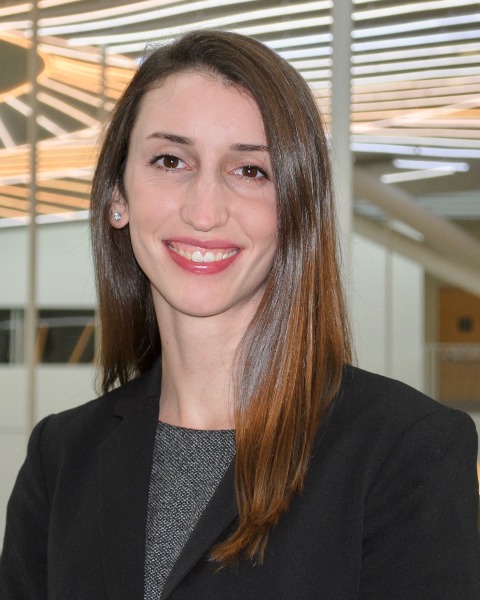Back


Poster Session D - Tuesday Morning
Category: General Endoscopy
D0276 - A Single Center Clinical Experience With an Intraprocedural Cleansing System for Inadequate Bowel Preparation During Colonoscopy
Tuesday, October 25, 2022
10:00 AM – 12:00 PM ET
Location: Crown Ballroom

Has Audio

Tessa Herman, MD
University of Minnesota
St. Paul, MN
Presenting Author(s)
Tessa Herman, MD1, Bryant Megna, MD2, Mohammad Bilal, MD3, Brian Hanson, MD4
1University of Minnesota, St. Paul, MN; 2University of Minnesota, Minneapolis, MN; 3University of Minnesota and Minneapolis Veterans Affairs Health Care System, Minneapolis, MN; 4Minneapolis Veterans Affairs Health Care System, Minneapolis, MN
Introduction: Adequate bowel preparation for colonoscopy is essential. Inadequate bowel preparation is common ( >25%) despite investments in patient education and advances in low-volume preps. There is an important need to improve bowel preparation at the time of colonoscopy. Pure-Vu® EVS System (MotusGI, Israel) is a single-use oversleeve-based intraprocedural cleansing system. We report the first clinical experience of the 3rd generation of this innovative technology.
Methods: We performed a retrospective review at a VA Hospital assessing the feasibility and efficacy of an intraprocedural cleansing system to improve visualization.
Results: Over 8 weeks, 14 outpatient colonoscopies were performed using the cleansing system. Procedural indications included surveillance and diagnostic (surveillance, n=7; positive FIT, n=1; diarrhea/constipation, n=4; abdominal pain, n=2). Most procedures used moderate sedation. Bowel preparation consisted of 1 bottle of magnesium citrate followed by split-dose large-volume polyethylene glycol and had an adherence rate of 80%. Mean pre-cleansing Boston Bowel Prep Score (BBPS) was 4.2 (range 0-9). In successful cases, the mean post-cleansing BBPS was 8.6 (range 8-9, n=11). Cecal intubation rate was 85%, improving to 100% when excluding sedation and technical failures. Overall procedural success rate was 80%. 3 procedures were unsuccessful (patient discomfort, n=2; technical, n=1). All 7 surveillance exams resulted in the maximum recommended surveillance interval. Average procedure time was 48 minutes. Procedure duration trended shorter over time (R=- 0.22, p-value 0.45) (Figure 1), especially for the highest-volume proceduralist (n=9).
Discussion: This is the first reported clinical experience with the 3rd generation intraprocedural bowel cleansing system. Unlike prior generations, this system can be loaded quickly after a poor preparation is endoscopically visualized. The system is relatively easy to use with low procedure failure rates but does come with a learning curve. Procedure duration appears to fall with time and experience. In all surveillance and FIT-positive patients, the procedure was successful and resulted in the longest recommended surveillance intervals. In conclusion, intraprocedural cleansing is both feasible and efficacious. The potential for increased surveillance intervals, improved resource utilization, and patient experience are important considerations when evaluating the utility of an intraprocedural cleansing device to improve bowel preparation.

Disclosures:
Tessa Herman, MD1, Bryant Megna, MD2, Mohammad Bilal, MD3, Brian Hanson, MD4. D0276 - A Single Center Clinical Experience With an Intraprocedural Cleansing System for Inadequate Bowel Preparation During Colonoscopy, ACG 2022 Annual Scientific Meeting Abstracts. Charlotte, NC: American College of Gastroenterology.
1University of Minnesota, St. Paul, MN; 2University of Minnesota, Minneapolis, MN; 3University of Minnesota and Minneapolis Veterans Affairs Health Care System, Minneapolis, MN; 4Minneapolis Veterans Affairs Health Care System, Minneapolis, MN
Introduction: Adequate bowel preparation for colonoscopy is essential. Inadequate bowel preparation is common ( >25%) despite investments in patient education and advances in low-volume preps. There is an important need to improve bowel preparation at the time of colonoscopy. Pure-Vu® EVS System (MotusGI, Israel) is a single-use oversleeve-based intraprocedural cleansing system. We report the first clinical experience of the 3rd generation of this innovative technology.
Methods: We performed a retrospective review at a VA Hospital assessing the feasibility and efficacy of an intraprocedural cleansing system to improve visualization.
Results: Over 8 weeks, 14 outpatient colonoscopies were performed using the cleansing system. Procedural indications included surveillance and diagnostic (surveillance, n=7; positive FIT, n=1; diarrhea/constipation, n=4; abdominal pain, n=2). Most procedures used moderate sedation. Bowel preparation consisted of 1 bottle of magnesium citrate followed by split-dose large-volume polyethylene glycol and had an adherence rate of 80%. Mean pre-cleansing Boston Bowel Prep Score (BBPS) was 4.2 (range 0-9). In successful cases, the mean post-cleansing BBPS was 8.6 (range 8-9, n=11). Cecal intubation rate was 85%, improving to 100% when excluding sedation and technical failures. Overall procedural success rate was 80%. 3 procedures were unsuccessful (patient discomfort, n=2; technical, n=1). All 7 surveillance exams resulted in the maximum recommended surveillance interval. Average procedure time was 48 minutes. Procedure duration trended shorter over time (R=- 0.22, p-value 0.45) (Figure 1), especially for the highest-volume proceduralist (n=9).
Discussion: This is the first reported clinical experience with the 3rd generation intraprocedural bowel cleansing system. Unlike prior generations, this system can be loaded quickly after a poor preparation is endoscopically visualized. The system is relatively easy to use with low procedure failure rates but does come with a learning curve. Procedure duration appears to fall with time and experience. In all surveillance and FIT-positive patients, the procedure was successful and resulted in the longest recommended surveillance intervals. In conclusion, intraprocedural cleansing is both feasible and efficacious. The potential for increased surveillance intervals, improved resource utilization, and patient experience are important considerations when evaluating the utility of an intraprocedural cleansing device to improve bowel preparation.

Figure: Figure 1: Colonoscopy Duration Using the Intraprocedural Cleansing System Over Time (All Providers, n=14). There was an overall trend of decreased procedure duration over time using the intraprocedural cleansing system (R=- 0.22, p-value 0.45).
Disclosures:
Tessa Herman indicated no relevant financial relationships.
Bryant Megna indicated no relevant financial relationships.
Mohammad Bilal indicated no relevant financial relationships.
Brian Hanson indicated no relevant financial relationships.
Tessa Herman, MD1, Bryant Megna, MD2, Mohammad Bilal, MD3, Brian Hanson, MD4. D0276 - A Single Center Clinical Experience With an Intraprocedural Cleansing System for Inadequate Bowel Preparation During Colonoscopy, ACG 2022 Annual Scientific Meeting Abstracts. Charlotte, NC: American College of Gastroenterology.
